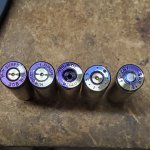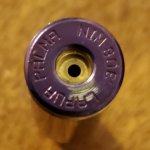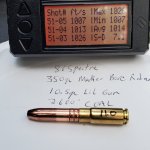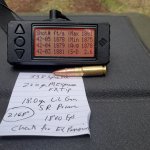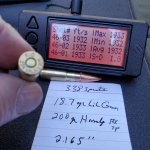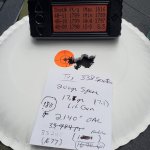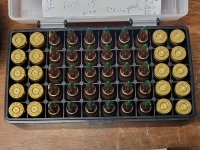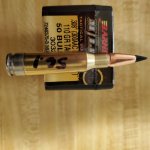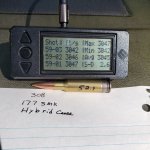The problem with all the measuring is that nothing is consistent.
None of the brands case heads are even flat....high spots and uneven on all.
Even the new Lapua to fired LC.
So nothing to accurately measure from as exact....just close somtimes but with lots of variation from case brands, inside the same brand, primer pocket depth, flatness, diameter, and flash hole size and possibly burrs.
Then there are the primers...no two mixtures that make up the detonation are exactly the same, its a blended mixture, not to mention the physical differences between the anvil and cup variations in composition and size.
Can not measure or weight anything exactly to come up with anything but a general conclusion, that might have some bering on the real outcome.
With that it appears some primers will have less S/ D over a few shots with certain powders, at a certain pressure in your particular hand load...But each primer cup, each primer mixture, consistently, and weight varies, each anvil varies.
Then ya have case volume inconsistencies and neck tension inconsistencies, plus bullet inconsistencies, and powder burn inconsistencies.
Hopeless for exacting...but when it comes together and you aquire low S/D keep doing what your doing.
I never worry about primers just seat them.
I been running a odd ball little AR 15 cartridge called the 338 Spectre with a 16" barrel. It runs single S/Ds with almost every bullet 160 gr to 350 gr. Super or subsonic ...completely loaded on a Dillion progressive.
Depending on case LP primer or SR primer, different brands with no difference still single digit S/D. Kind of incredible but its high load density and 100 % burnt according to QL with a moderate Lee factory crimp die.
Notice the 350 gr is machined on my lathes to make it a bore ride, another variable.
All these different primers SR & LP and 4 different cases but not mixed with every bullet from 160 gr to 350 gr subs all single digit S/Ds fired in an AR 15 auto loader, sub or super, and accurate with them all.
Unusual...maybe, but all these variables seem to make little difference in this cartridge.
So I'm not gonna worry about primers, unless I notice a difference...just seat em and go.
But if all that measuring and weighing works for anyone keep on doing it.
But maybe it's cartridge volume balanced to bore ratio, to powder volume, to % burnt, rather than primer that makes the difference.
My 6 Dasher is like that too...just seat the primer, no other concern needed.


